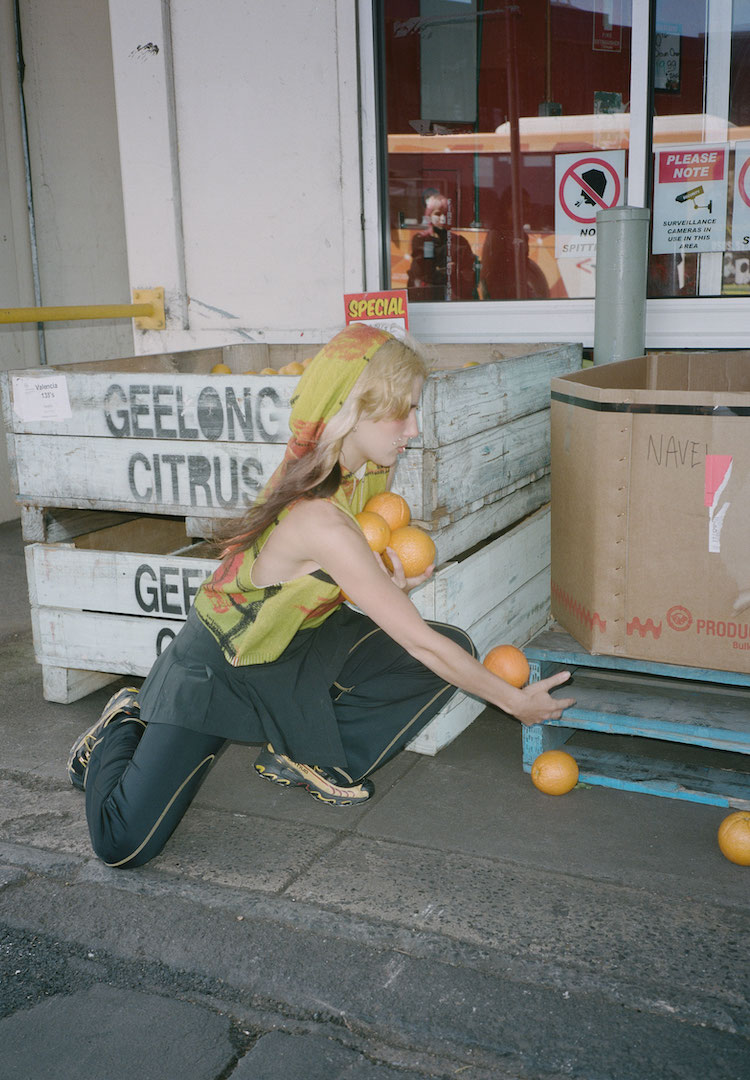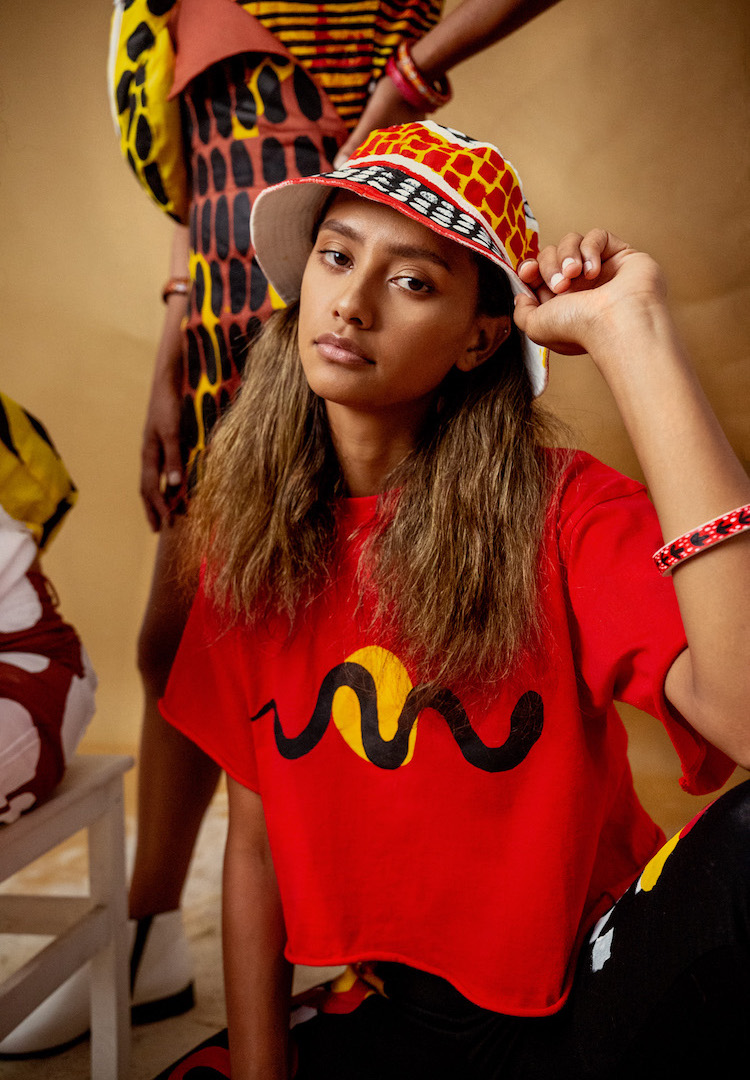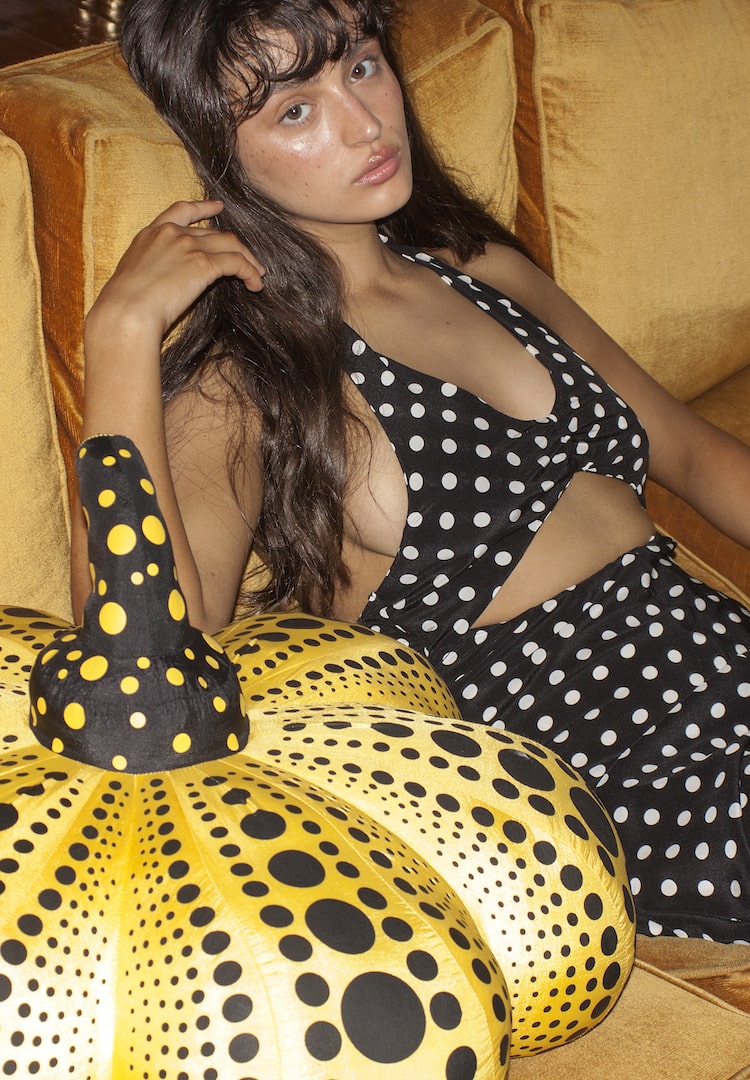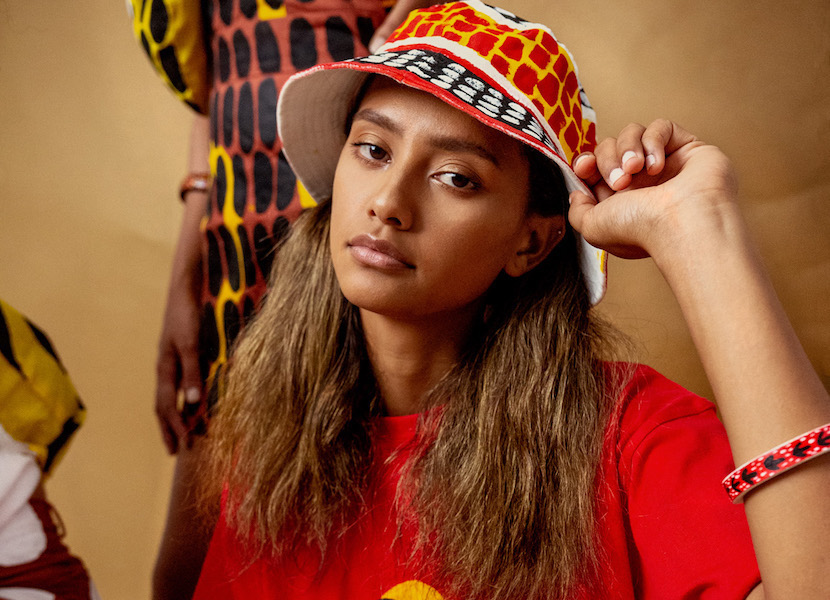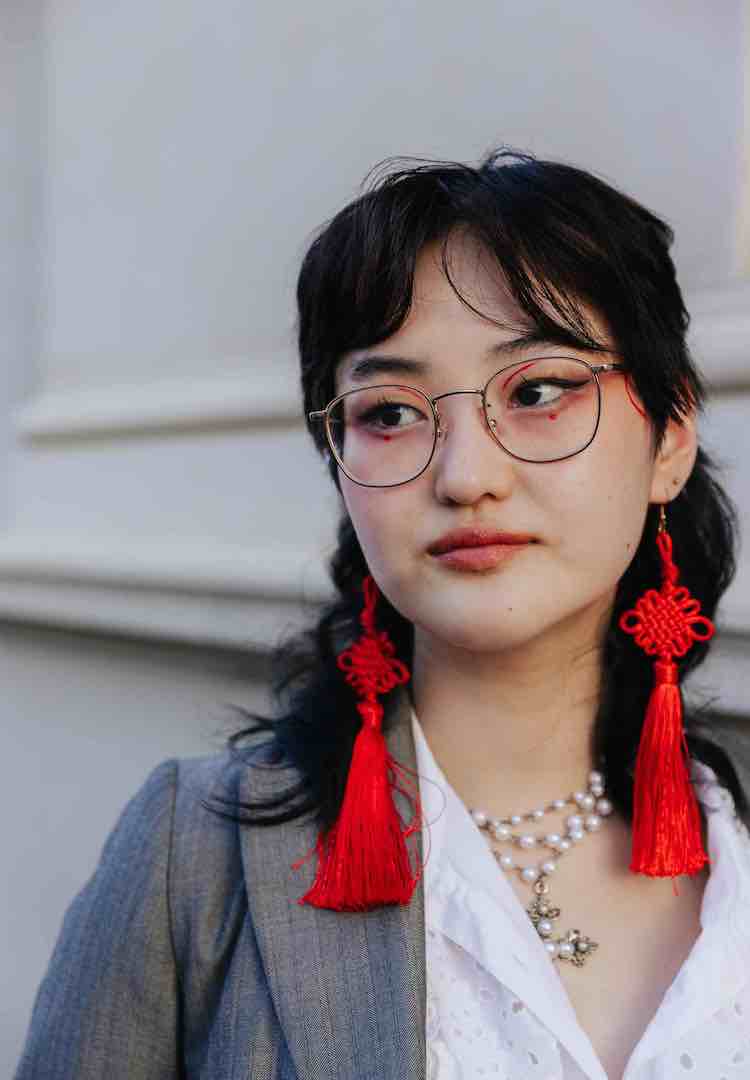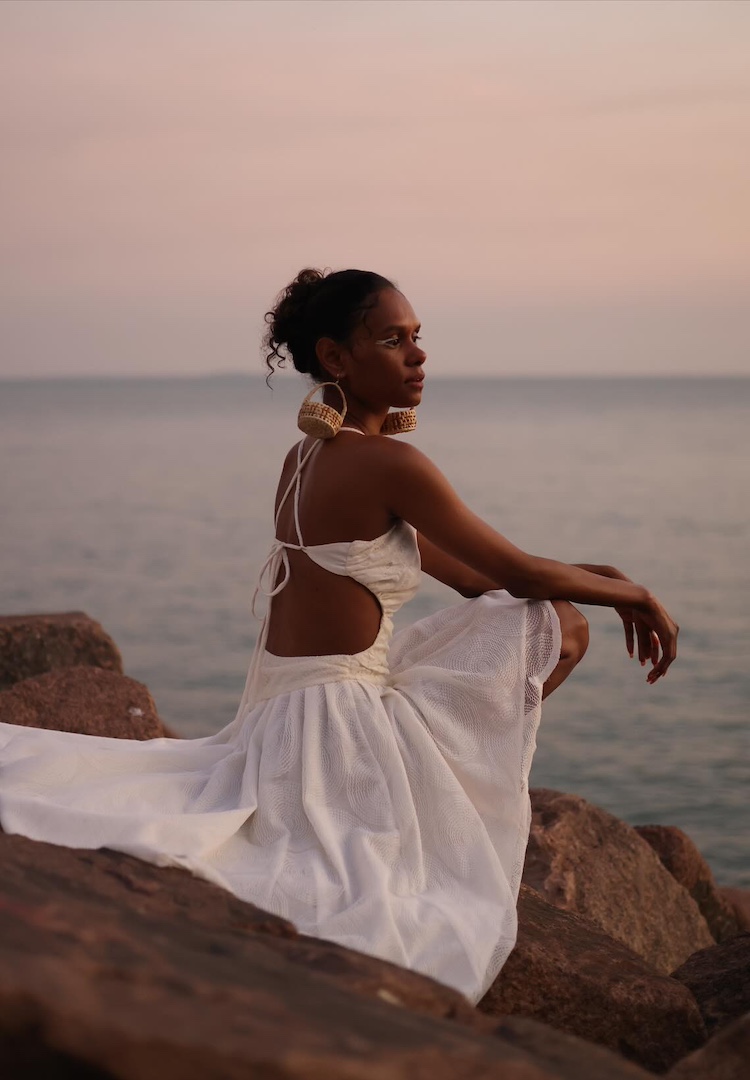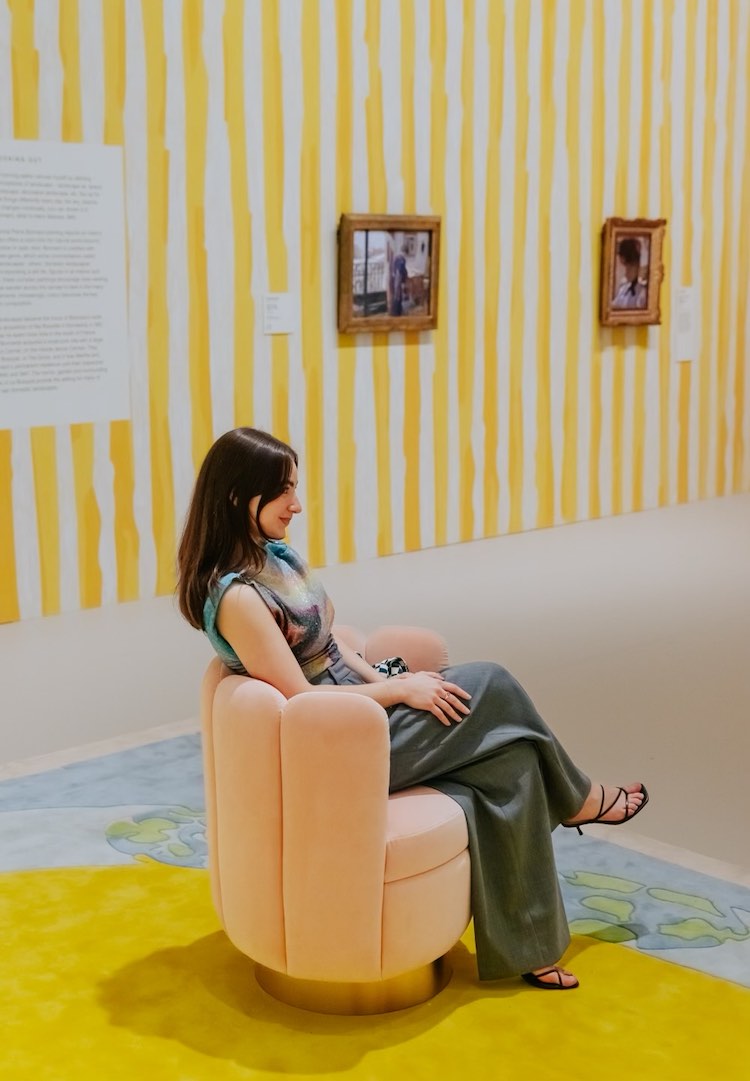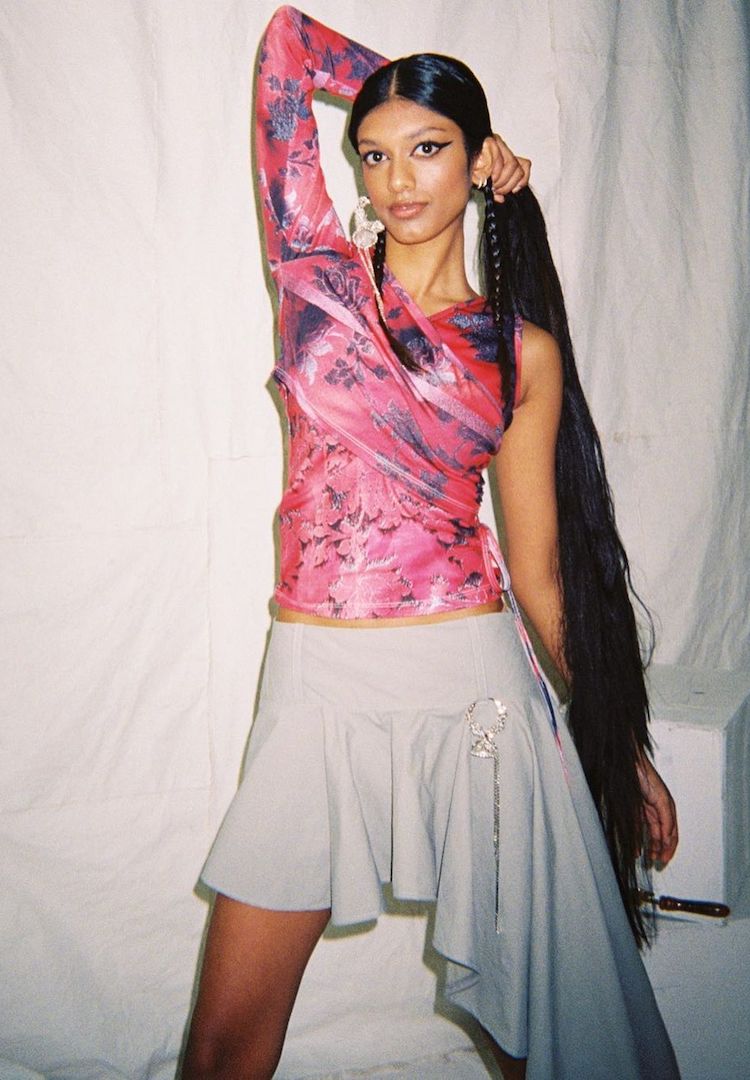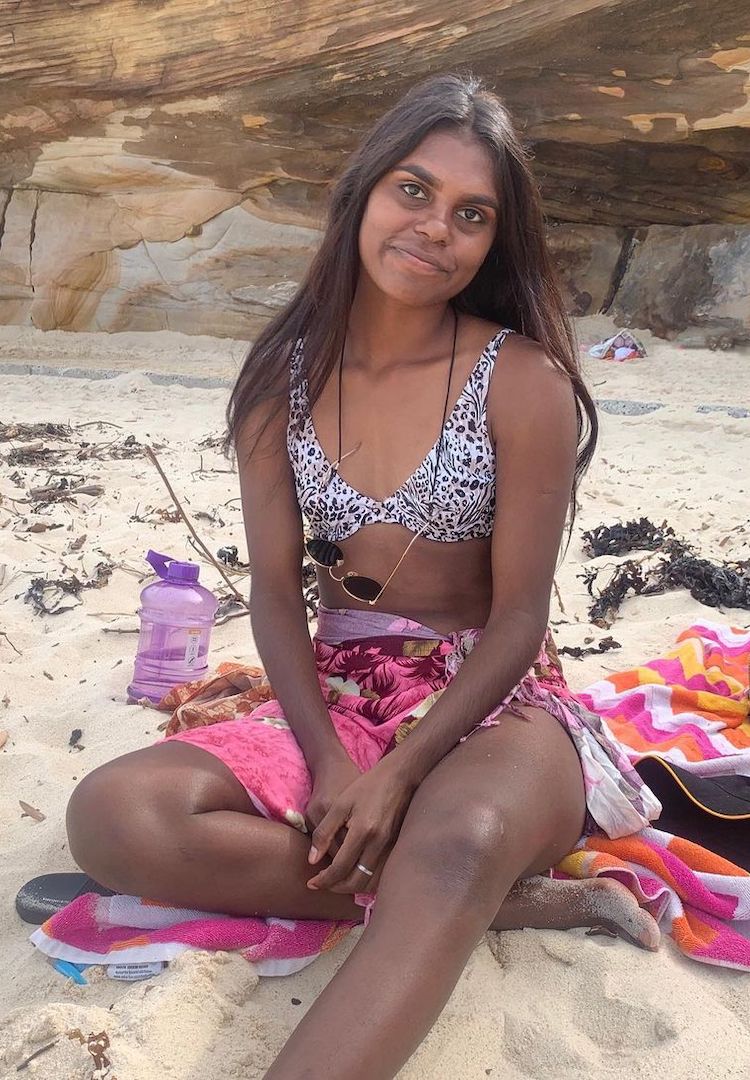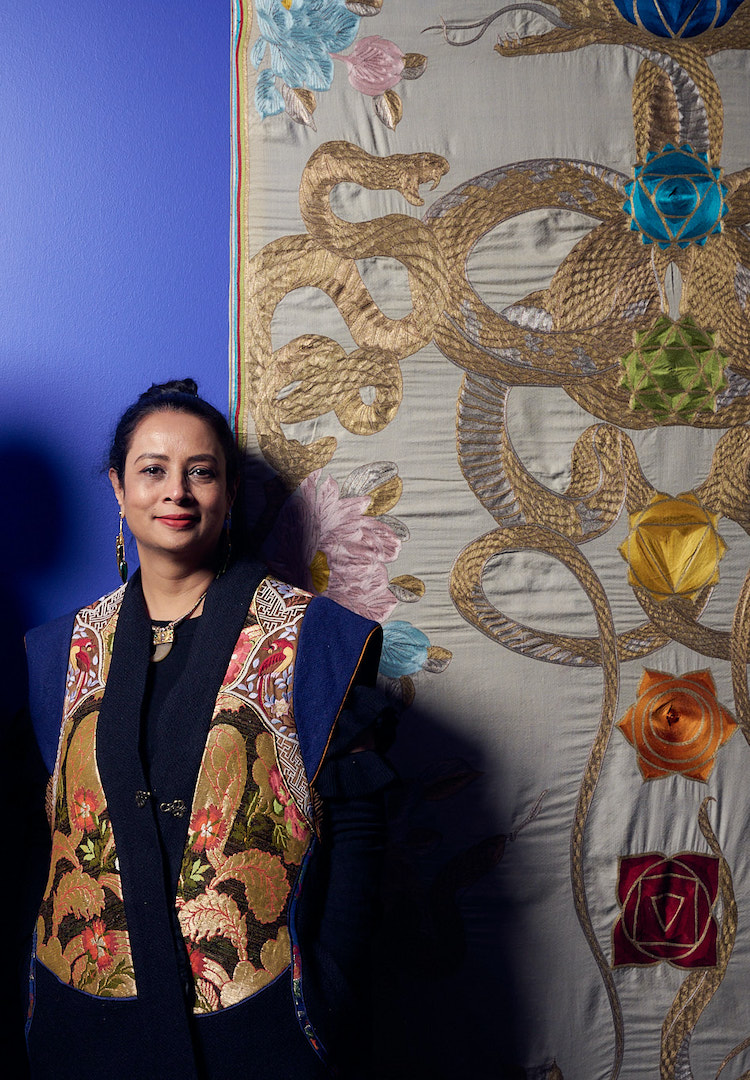Fashion is essential when it comes to maintaining a cultural dialogue, here’s why
How First Nations Fashion and Design’s runway show and film bridged two worlds.
In fashion, often the temptation is to look forward – to spot the new trend, name the next style, and forecast the forecast. Staying future-focused can help us find drive, but remembering the past gives us our heart.
I recently wrote a story about the Melbourne Fashion Festival’s evolution over the last ten years. One reason for its enduring success is that it remembers the people who built our fashion industry, while also embracing modern innovations. It took me a long time to realise these two halves of the Festival make a powerful whole.
Keep up to date with ethical, Australian design over at our Fashion section.
The lightbulb moment came after watching the runway show Walking in Two Worlds by First Nations Fashion + Design (FNFD), as part of the 2021 Melbourne Fashion Festival. FNFD is a Not for Profit that supports Aboriginal and Torres Strait Islander people in fashion and design. The event showed how fashion can connect modern aspiration with cultural identity. It also proved that when we find a way to bridge those worlds, we can create something pretty special.
What is Walking in Two Worlds?
Fittingly, Walking in Two Worlds is made up of two parts. The first is a live runway in front of an audience, and the second is a pre-shot film on Gungganji Country (also known as Yarrabah) that plays during the show.
The footage follows the dreams of Kylantra, a young girl who longs to become a model. As she slips into sleep under the watch of her elders, models emerge from the bush barefoot, wearing fashion from five Indigenous designers and weaving between the trees.
The scene is recreated on the runway. The difference? The tall yawning paperbarks that stretch to the sky in Yarrabah are replaced by bars of neon light erupting from the stage. As models walk through both landscapes, a parallel is drawn between the two worlds many Indigenous people navigate daily. The dance between two realities begins.
Who is Elverina Johnson?
A Gurugulu and Indinji Gimuy woman from Yarrabah with 30 years of fashion and design experience, Elverina Johnson is one of the people who brought Walking in Two Worlds to life. “I pitched the idea of Grace Lillian Lee [FNFD Founder] coming to Yarrabah to do a show,” says Elverina. “It was basically about coming onto my country, and giving Grace and the models the opportunity to connect with culture and land and the elders.”
One of the messages of the show is that your dreams – like Kylantra’s – can come to life without sacrificing your cultural roots. It is an idea Elverina speaks about to many Indigenous young people.
“You can be strong as a person from cultural foundations and want to be a lawyer or a doctor,” she says. “You can still bring those two worlds together. It makes for an even stronger person without denying who you are, your cultural connections and your identity. You don’t have to lose yourself or lose your culture to be somebody. You take it with you.” To Elverina, it’s these two halves that make for a stronger whole.
Who is Emily Doolah?
The second woman I spoke with was Emily Doolah, whose collection, Lar Wali Kar, opened the show. Born on Horn Island in the Torres Strait, Emily is a recognised painter and artist whose creative credentials also include fashion designer and jewellery maker.
Where Elverina boasts three decades of fashion designing know-how, Emily calls herself “the new kid on the block”. “I only started with Gracie two years ago, I have no fashion background… I can’t sew for nuts! I can sew straight lines and that’s about it!” she laughs. “I went out of painting straight into this fantastic new industry.”
Emily tells me her foray into fashion provided a new way to connect the past and present. “The knowledge I have is ancient knowledge, it has been handed down from generation to generation. For me, Walking in Two Worlds is the marriage of the old to the now,” she says.
How can fashion help bridge two worlds?
As a medium, fashion is renowned for its ability to be more than just a few pieces of fabric and some thread; it has immense storytelling capabilities. “It’s more than just parading some clothes around. When it comes to Indigenous fashion, it is about adding your stories and your connection to country. That’s what adds another dimension to the designs,” explains Elverina.
“Normally people go to a fashion show and it’s this stereotype of the clothes, the models, whatever, but when you see this, it’s a whole new world of telling your story. It’s cutting-edge stuff, definitely,” she says.
As someone who found expression in painting, Emily says fashion is a new way to share her voice. “It’s different. It’s a wider audience in fashion, and you can speak with the way you artistically design.”
This idea stays with me long after we finish speaking: fashion helps you reach more people. It’s a wearable way of sharing your message with others. The sentiment is echoed by FNFD’s founder Grace, who describes fashion as “tangible and relatable”. Grace says the power of fashion is so strong it can even “act as a form of reconciliation”.
A runway snapshot
If you want to know what it looks like to walk in two worlds, watch the show. The designers don’t just talk the talk, they walk the walk by creating modern pieces that tell the stories of their culture.
Emily’s collection favours creamy whites and earthy tones that contrast against the darkly lit stage. She is inspired by the ochre colours of the coral trout, but she uses fish for more than their colour palette. “It was a statement for me, by using the fish to get people to understand global warming and how it’s going to affect the Torres Strait Island. In the next 30 years, we might not have some of the low lying islands,’” she explains.
Colour and country are alive in Elverina’s work too. “I love colour,” she says. “That’s more significant for me because of where I am, where I live and where I come from. I’m situated in Yarrabah, in between the rainforest where we have colour everywhere.”
Walking into the future
As we’re wrapping up, I ask Emily and Elverina if they have advice for anyone struggling to bridge their worlds. “One of the things I say to kids is be proud of who you are, and be proud of what you want to become and what you want to do. Then, there is no limitation to what you can do,” says Elverina.
Following your own path and remembering where you’ve come from is important to Emily, too. “Just stay true to yourself, always embrace your family, because your family is your backbone,” she says.
Using your cultural heritage to propel you to go after your dreams may seem daunting, but it is doable, and the pay-off is worth it. And if you need help taking the first step, there’s no better place to start than right here.
To find out more about First Nations Fashion and Design, head here.

